The Method of Moderation: Illustrative Notebook
Source
# Import Econ-ARK styling and display header
from style import (
HEADER_HTML_NOTEBOOK,
apply_ark_style,
apply_notebook_css,
)
# Apply Econ-ARK branding and styling
apply_ark_style()
apply_notebook_css()
# Display Econ-ARK header (for Jupyter notebooks)
from IPython.display import HTML, display
display(HTML(HEADER_HTML_NOTEBOOK))Author: Alan Lujan, Johns Hopkins University
This notebook provides a pedagogical introduction to the Method of Moderation (MoM), a novel technique for solving consumption-saving models with superior accuracy and stability. We begin by motivating the problem that MoM solves—the “extrapolation problem” inherent in sparse-grid implementations of the Endogenous Grid Method (EGM). We then build the theoretical foundations for MoM, demonstrating how it leverages analytical bounds to ensure economically sensible behavior across the entire state space.
Model Foundations: The Friedman-Muth Income Process¶
To understand the consumption-saving problem, we must first define the economic environment. We adopt the canonical framework of an agent who receives a stream of labor income that is subject to both permanent and transitory shocks. This income process, first conceptualized by Friedman (1957) and later formalized stochastically by Muth (1960), provides a realistic foundation for modeling household financial behavior. It captures two key features of real-world income dynamics:
Permanent Shocks: Unexpected changes to lifetime earning potential (e.g., a promotion or a permanent disability).
Transitory Shocks: Temporary fluctuations in income (e.g., a one-time bonus or a temporary layoff).
The model used in this notebook, drawn from Carroll (2020), implements this income process and provides the basis for solving the consumer’s optimization problem.
The Extrapolation Problem in Consumption-Saving Models¶
At its core, the Method of Moderation (MoM) is designed to solve a persistent challenge in computational economics: the extrapolation problem. This issue is particularly pronounced in sparse-grid implementations of the Endogenous Grid Method (EGM), a widely-used technique for solving dynamic stochastic optimization problems.
When EGM is used to solve a consumption-saving model, it computes the optimal consumption policy at a finite set of grid points. However, to simulate agent behavior or analyze policy implications, we often need to evaluate the consumption function at points that lie outside this pre-computed grid. Standard practice is to extrapolate from the grid, but this can lead to results that violate fundamental economic theory. Specifically, linear extrapolation can predict negative precautionary saving, which implies that consumers with greater income uncertainty would save less than those with no uncertainty—a direct contradiction of established economic principles Leland, 1968Sandmo, 1970Kimball, 1990.
MoM addresses this problem by abandoning direct extrapolation of the consumption function. Instead, it operates in a transformed space defined by two analytical, theoretically-grounded bounds. This approach builds on a long literature on “buffer-stock” saving behavior Carroll, 1997, which has established theoretical properties of consumption functions under uncertainty Stachurski & Toda, 2019Ma et al., 2020. The two bounds are:
The Optimist’s Solution: A consumer who ignores all future income risk.
The Pessimist’s Solution: A consumer who assumes the worst possible income realization in all future periods.
The true, “realist” consumption function must lie between these two extremes. MoM respects this by interpolating a moderation ratio that is guaranteed to remain within these bounds. The result is a consumption function that is not only computationally efficient but also economically coherent across the entire state space.
Key Insight: By transforming the problem into a space defined by theoretical bounds, MoM ensures that its solutions are always economically sensible, even far outside the computed grid. This notebook will walk through the practical implementation of this insight, from demonstrating the EGM’s extrapolation failure to building the MoM solution step-by-step.
from __future__ import annotations
from moderation import (
IndShockEGMConsumerType,
IndShockMoMConsumerType,
)
from plotting import (
GridType,
plot_consumption_bounds,
plot_logit_function,
plot_moderation_ratio,
plot_mom_mpc,
plot_precautionary_gaps,
plot_value_functions,
)
# Model setup: Consumer with income uncertainty
params = {
"CRRA": 2.0,
"DiscFac": 0.96,
"Rfree": [1.02],
"TranShkStd": [1.0],
"cycles": 1,
"LivPrb": [1.0],
"vFuncBool": True,
"CubicBool": True,
"PermGroFac": [1.0],
"PermShkStd": [0.0],
"TranShkCount": 7,
"UnempPrb": 0.0,
"BoroCnstArt": None,
}
# Dense grid for "truth" solution (high precision)
dense_grid = {"aXtraMin": 0.001, "aXtraMax": 40, "aXtraCount": 500, "aXtraNestFac": 3}
# Sparse grid for practical comparison (5 points only)
sparse_grid = {"aXtraMin": 0.001, "aXtraMax": 4, "aXtraCount": 5, "aXtraNestFac": -1}
# Solve three versions: Truth (dense EGM), Sparse EGM, Sparse MoM
IndShockTruth = IndShockEGMConsumerType(**(params | dense_grid))
IndShockTruth.solve()
IndShockTruthSol = IndShockTruth.solution[0]
# Unpack theoretical bounds (same for all methods)
TruthOpt = IndShockTruthSol.Optimist
TruthPes = IndShockTruthSol.Pessimist
TruthTight = IndShockTruthSol.TighterUpperBound
# Sparse EGM solution (standard approach)
IndShockEGMApprox = IndShockEGMConsumerType(**(params | sparse_grid))
IndShockEGMApprox.solve()
IndShockEGMApproxSol = IndShockEGMApprox.solution[0]
# Sparse MoM solution (same grid, different method)
IndShockMoMApprox = IndShockMoMConsumerType(**(params | sparse_grid))
IndShockMoMApprox.solve()
IndShockMoMApproxSol = IndShockMoMApprox.solution[0]
# Grid parameters for plotting
mNrmMax = IndShockMoMApproxSol.mNrmMin + IndShockMoMApprox.aXtraGrid.max()Consumption Function Analysis¶
The first set of figures will focus on the core of the consumption-saving problem: the consumption function, , which maps market resources, , to a chosen level of consumption. We will demonstrate the extrapolation problem inherent in the standard EGM and show how the Method of Moderation resolves it by respecting theoretical bounds.
Figure 1: The EGM Extrapolation Problem¶
At the heart of any numerical solution to a consumption-saving problem lies the challenge of extrapolation. Because we can only compute the solution at a finite number of points, we must have a reliable way to evaluate the policy function at points outside this grid. Economic theory provides a powerful test of any method’s extrapolation properties: the precautionary saving gap.
This gap, defined as the difference between the consumption of a perfect-foresight “optimist” and that of a “realist” facing uncertainty, should always be positive. The presence of uninsurable income risk should lead consumers to save more (and thus consume less) than they would in a certain world. However, as demonstrated in the paper and illustrated in Notebook-code (which corresponds to Figure 1 in the academic paper), standard EGM struggles with this constraint when extrapolating Carroll, 2006.
# Figure 1: EGM Extrapolation Failure
plot_precautionary_gaps(
truth_solution=IndShockTruthSol,
approx_solutions=IndShockEGMApproxSol,
title="Figure 1: EGM Extrapolation Failure",
subtitle="EGM Extrapolation Failure: Negative Precautionary Saving",
)
EGM in the Literature
The Endogenous Grid Method (Carroll (2006)) is a powerful and widely-used tool in computational economics. Its applications have been extended to solve multi-dimensional problems Barillas & Fernández-Villaverde, 2007, models with occasionally binding constraints Hintermaier & Koeniger, 2010, non-smooth and non-concave problems Fella, 2014, and discrete-continuous choice models Iskhakov et al., 2017. For a comprehensive treatment of the theory and practice of EGM, see White, 2015.
A critical step in implementing any numerical solution is the discretization of continuous stochastic processes. Standard methods for discretizing income shocks include those proposed by Tauchen & Hussey, 1991 and Tauchen, 1986.
Figure 2: Truth Bounded by Theory¶
Having established the extrapolation problem, we now turn to the theoretical foundation of its solution. The Method of Moderation is built upon a crucial insight from consumption theory: the optimal consumption function for a “realist” consumer facing uncertainty is always bounded by the consumption functions of two hypothetical consumers for whom the problem has a simple, analytical solution. These are the “optimist” and the “pessimist.”
This figure illustrates these theoretical bounds, demonstrating that the true, high-precision consumption function (our “Truth” solution) lies neatly between them. This provides the theoretical justification for the MoM’s approach, as shown in Notebook-code (which corresponds to Figure 2 in the academic paper).
# Figure 2: Truth Bounded by Theory
plot_consumption_bounds(
solution=IndShockTruthSol,
title="Figure 2: Truth Bounded by Economic Theory",
subtitle="True Consumption Always Lies Between Theoretical Bounds",
show_grid_points=False, # Truth solution has too many grid points to display clearly
)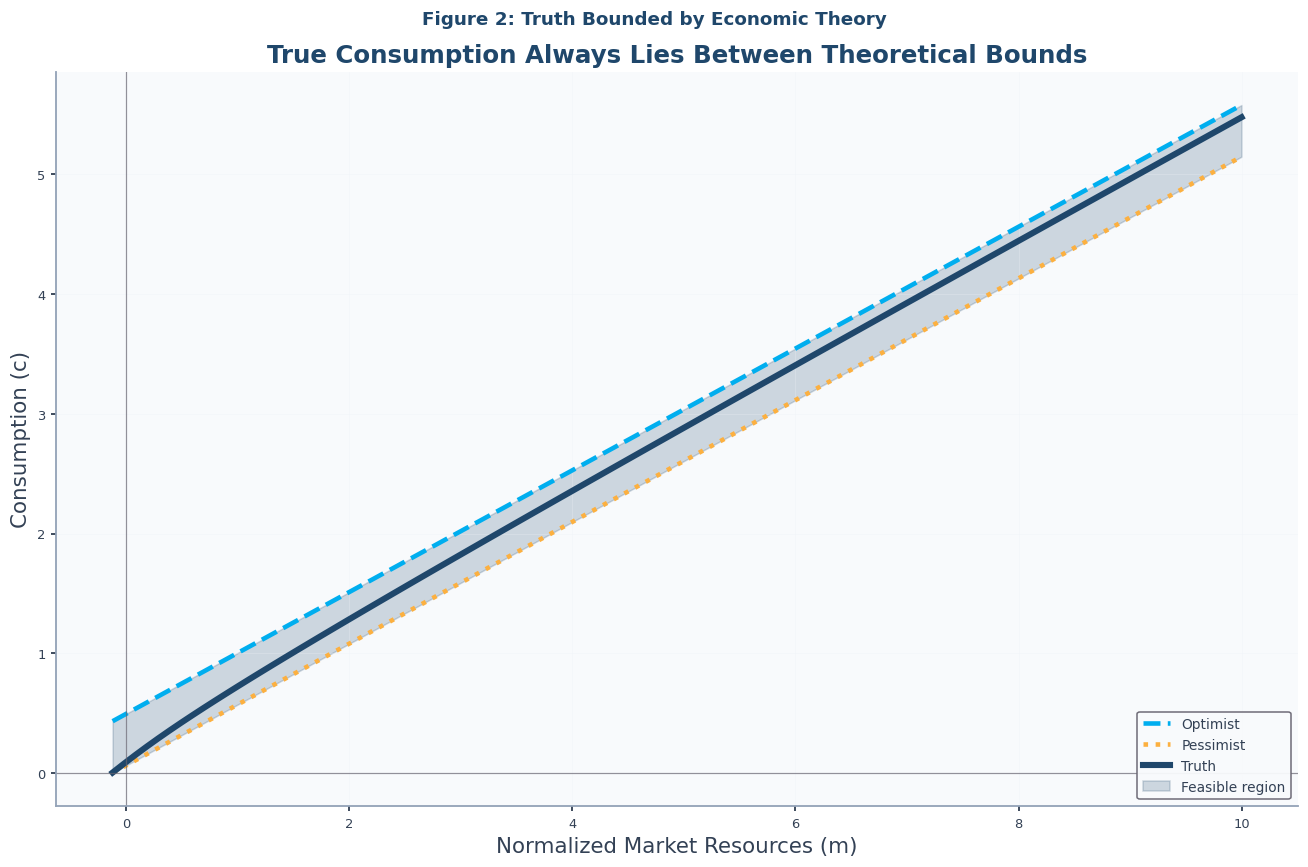
Figure 3: Method of Moderation Solution¶
With the theoretical bounds established, we can now demonstrate how the Method of Moderation uses them to solve the extrapolation problem. Instead of directly interpolating the consumption function, MoM interpolates a moderation ratio that measures where the realist’s consumption lies relative to the optimist and pessimist bounds.
Because this ratio is interpolated in a transformed space that guarantees it will respect the bounds, the resulting consumption function also respects them. As this figure shows, the MoM approximation of the precautionary saving gap remains positive and closely tracks the true solution, even far beyond the computed grid. The success of this approach is clearly demonstrated in Notebook-code (which corresponds to Figure 3 in the academic paper).
# Figure 3: Method of Moderation Success
plot_precautionary_gaps(
truth_solution=IndShockTruthSol,
approx_solutions=IndShockMoMApproxSol,
title="Figure 3: Method of Moderation Solves Extrapolation",
subtitle="MoM Maintains Positive Precautionary Saving",
)
The Method of Moderation builds on EGM’s computational strengths while addressing the extrapolation challenge through economic theory. Following the paper’s algorithm, the key insight is that optimal consumption is always bounded between the optimist and pessimist consumption functions, both of which have known analytical solutions.
MoM Algorithm Details
Instead of extrapolating consumption directly (which can violate bounds), MoM follows these steps (notation matches the paper):
Solve standard EGM to get realist consumption at gridpoints
Transform to log excess resources for convenient interpolation domain
Compute moderation ratio (paper Eq. (8))
Apply standard logit transformation for asymptotic linearity
Interpolate function with derivatives for smooth extrapolation
Reconstruct consumption using
This approach ensures consumption always stays within economic bounds while achieving excellent extrapolation properties through the asymptotically linear transformation function, as derived in the paper.
The quality of this method relies on accurate function approximation between gridpoints Santos, 2000, and the bracketing approach complements work on bounding numerical errors in dynamic models Judd et al., 2017. While linear interpolation is simple, cubic Hermite interpolation Fritsch & Carlson, 1980Fritsch & Butland, 1984Hyman, 1983 offers superior accuracy by matching not only the function’s level but also its derivative at each gridpoint. This ensures that the numerical solution satisfies the Euler equation at the gridpoints themselves Benveniste & Scheinkman, 1979Milgrom & Segal, 2002. For even better shape-preservation, monotone cubic Hermite schemes can be employed Boor, 2001. The similarity of MPCs under certain conditions Chipeniuk et al., 2021 helps explain why simpler linear bounds often perform well. The HARK toolkit implements cubic Hermite interpolation for this reason.
Figure 4: MoM Consumption Function¶
Having shown that MoM produces a precautionary saving gap with the correct theoretical properties, we can now examine the consumption function itself. This figure plots the MoM consumption function against the same theoretical bounds we saw in Figure 2.
As expected, the MoM solution remains strictly between the optimist and pessimist bounds. The figure also introduces a tighter upper bound. This bound is derived from the maximum possible marginal propensity to consume () as market resources approach the natural borrowing constraint. The existence of such a bound is a key result from the buffer-stock saving literature Carroll, 2001, with explicit formulas for the limiting MPC derived in Ma & Toda, 2021 and Carroll & Toche, 2009. The fact that the MoM solution respects this tighter bound as well, as shown in Notebook-code (which corresponds to Figure 4 in the academic paper), demonstrates its robustness and theoretical consistency.
# Figure 4: MoM Consumption Function
plot_consumption_bounds(
solution=IndShockMoMApproxSol,
title="Figure 4: MoM Consumption Function",
subtitle="MoM Consumption Respects Theoretical Bounds",
m_max=3.0,
show_tight_bound=True,
)
Bound Preservation: MoM consumption stays within theoretical bounds and below tight bound.
Figure 5: Direct Method Comparison¶
We now arrive at the decisive comparison between the Endogenous Grid Method and the Method of Moderation. This figure plots the precautionary saving gaps from both the EGM and MoM solutions on the same axes, alongside the high-precision “truth” solution.
All three solutions are generated from the same underlying economic parameters, and both the EGM and MoM approximations use the same 5-point sparse grid. The difference in their extrapolation behavior is therefore entirely attributable to the solution method itself. The results, presented in Notebook-code, clearly show the superiority of the Method of Moderation for problems where extrapolation is a concern.
# Figure 5: Direct Method Comparison
plot_precautionary_gaps(
truth_solution=IndShockTruthSol,
approx_solutions=[IndShockEGMApproxSol, IndShockMoMApproxSol],
title="Figure 5: Direct Method Comparison",
subtitle="EGM vs MoM Extrapolation Performance",
)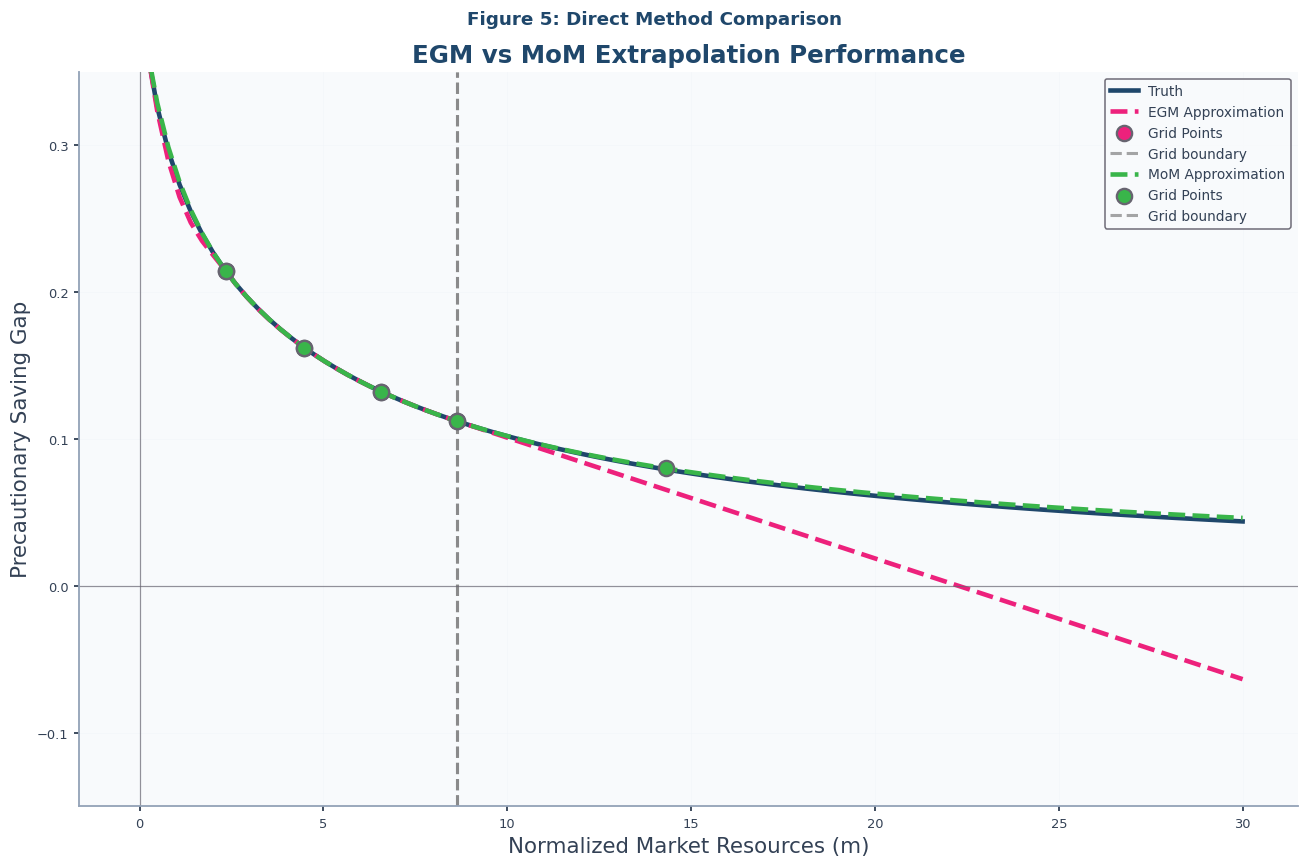
# Figure 6: Moderation Ratio Function
plot_moderation_ratio(
solution=IndShockMoMApproxSol,
title=r"Figure 6: Consumption Moderation Ratio $\omega(m)$",
subtitle="Wealth-Dependent Moderation Between Bounds",
m_max=50,
grid_type=GridType.CONSUMPTION,
)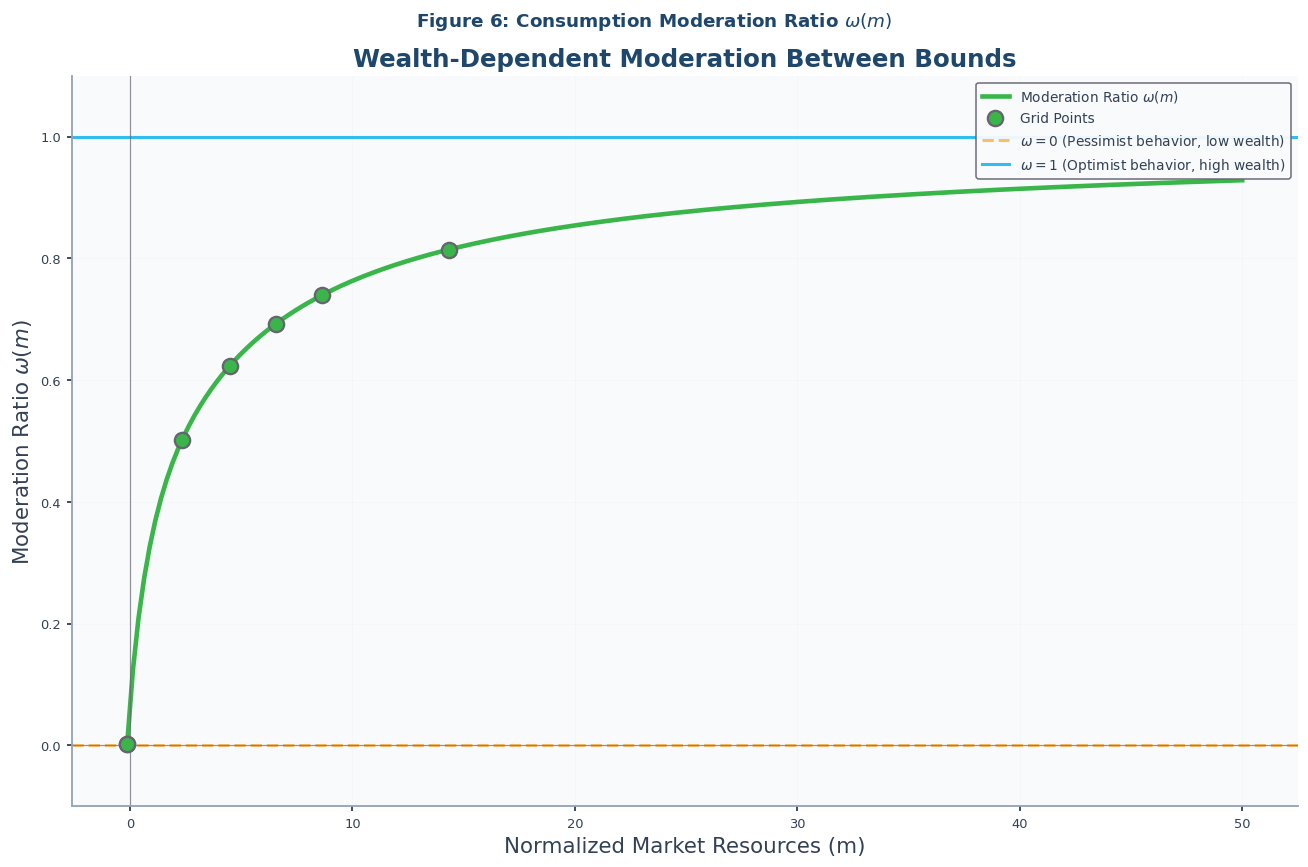
Figure 7: The Logit Transformation¶
# Figure 7: Logit Transformation Function
plot_logit_function(
solution=IndShockMoMApproxSol,
title="Figure 7: Logit Transformation for Stable Extrapolation",
subtitle="Unbounded Transformation for Stable Extrapolation",
m_max=50,
)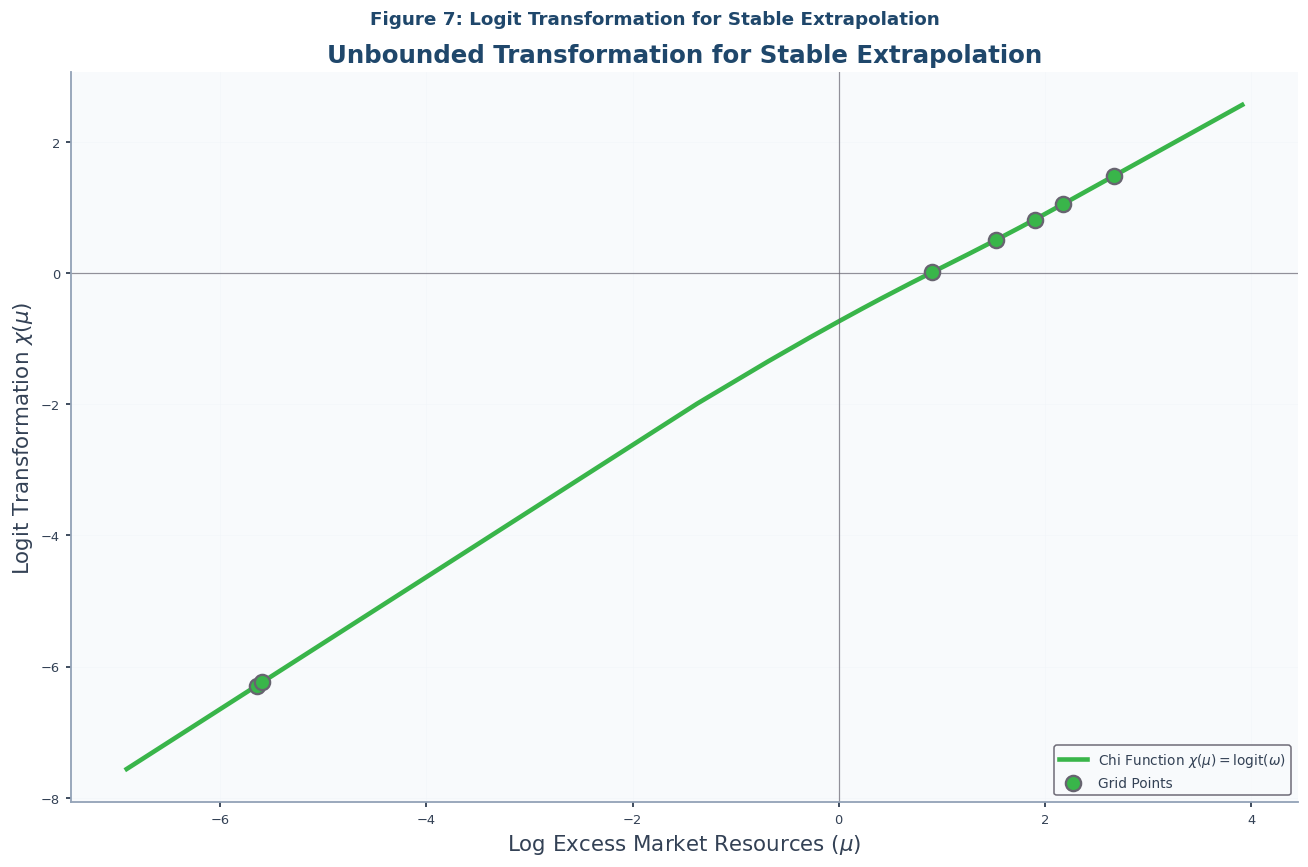
Function Properties and Bounds¶
Figure 8: MoM MPC Bounded by Theory¶
Beyond the consumption function itself, its derivative—the marginal propensity to consume (MPC)—is of central economic importance. The MPC, , measures the change in consumption for a one-unit change in market resources and is a key input for macroeconomic models and policy analysis. It is crucial for understanding:
Monetary policy transmission: How interest rate changes affect spending
Fiscal policy effectiveness: How tax rebates stimulate consumption
Wealth effects: How asset price changes impact the economy
Just as with the consumption function, the MPC must respect theoretical bounds. As detailed in the paper's extensions, the MPC is bounded by a minimum value, (the MPC of the risk-free optimist), and a maximum value, (the MPC as resources approach the borrowing constraint). These bounds are fundamental properties of consumption models with prudence Carroll, 2001. This figure demonstrates that the MPC derived from the MoM consumption function correctly lies within these theoretical bounds, as shown in Notebook-code.
# Figure 8: MoM MPC Bounds
plot_mom_mpc(
solution=IndShockMoMApproxSol,
title="Figure 8: MoM MPC Bounded by Theory",
subtitle="MoM MPC Stays Within Theoretical Bounds",
)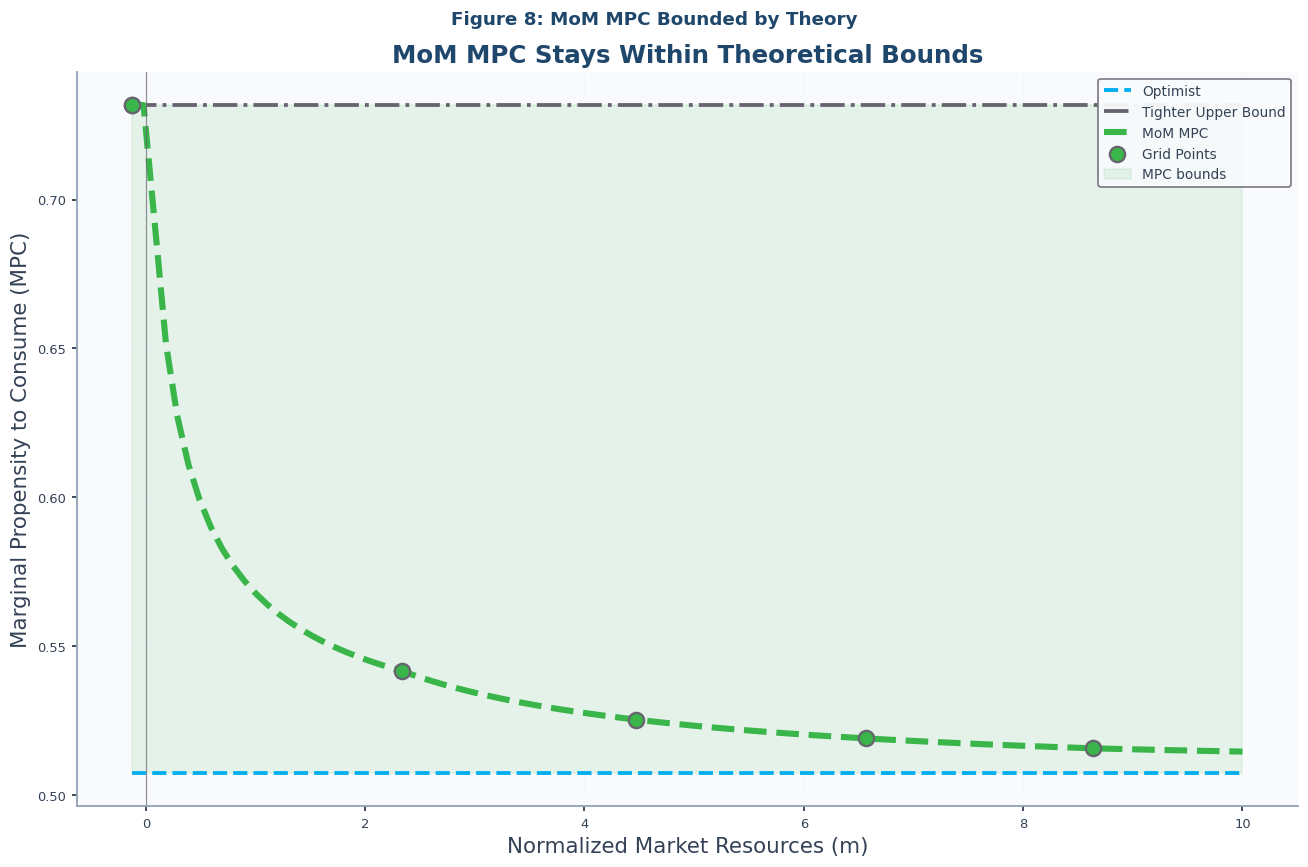
Figure 9: Value Functions Bounded by Theory¶
We now turn from the policy function, , to the value function, , which represents the consumer’s expected lifetime utility as a function of current market resources. The value function is a cornerstone of dynamic programming and provides a comprehensive measure of a consumer’s well-being.
This figure serves two purposes. First, it demonstrates that the value function, like the consumption function, is bounded by the optimist and pessimist solutions Aiyagari, 1994Huggett, 1993. Second, it compares the value functions generated by the high-precision “truth” model, the sparse-grid EGM, and the sparse-grid MoM. This allows us to see how accurately each method approximates the true value function, as shown in Notebook-code.
# Figure 9: Value Functions
plot_value_functions(
truth_solution=IndShockTruthSol,
title="Figure 9: Value Functions Bounded by Economic Theory",
subtitle="Value Function: True Solution vs Sparse Approximations",
egm_solution=IndShockEGMApproxSol,
mom_solution=IndShockMoMApproxSol,
)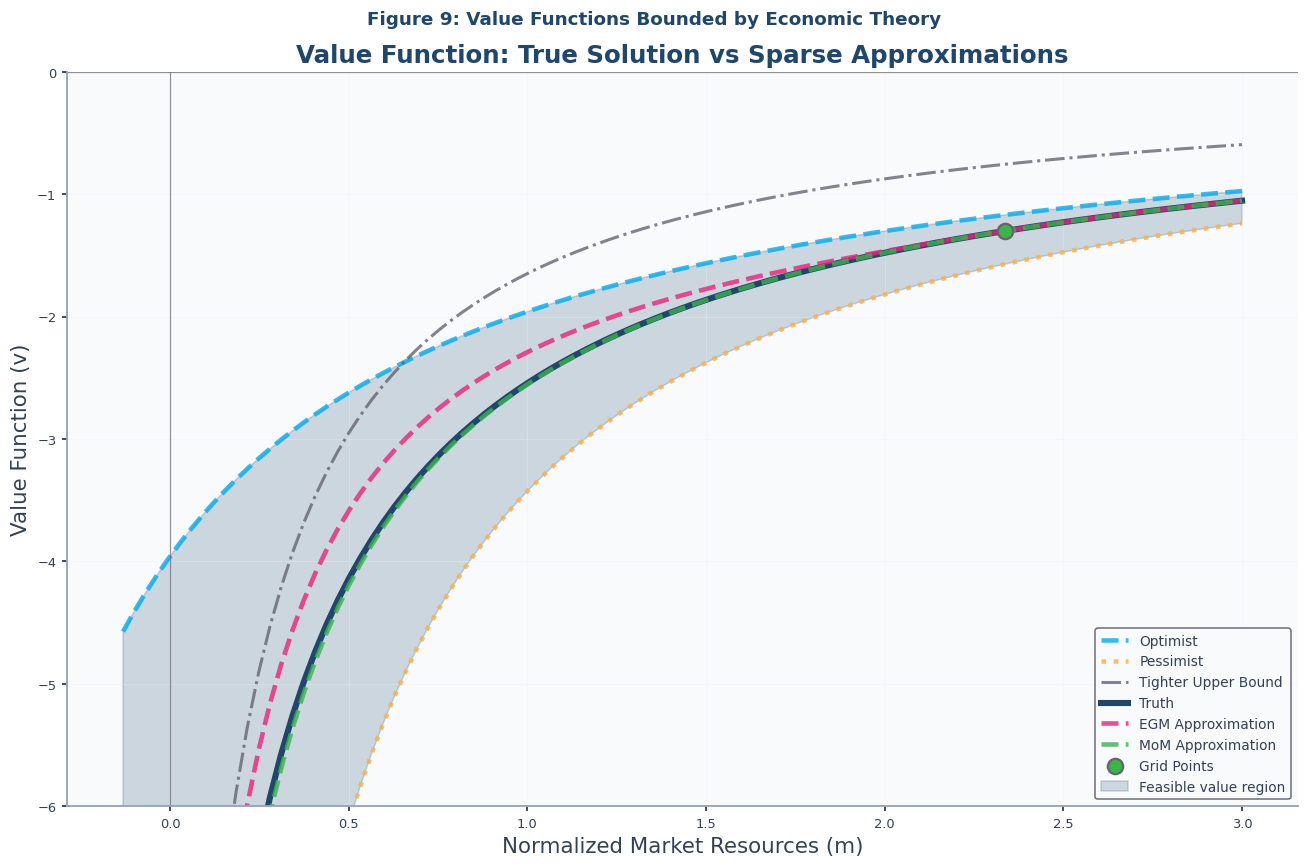
Figure 10: Inverse Value Functions ¶
For numerical stability and easier interpretation, it is often convenient to work with the inverse value function, . This function represents the constant level of consumption that would yield the same lifetime utility as the value function at a given level of market resources. It can be thought of as the “consumption equivalent” of lifetime utility.
This transformation is particularly useful because, as this figure shows, it tends to be much more linear than the value function itself, especially near the borrowing constraint. This makes it better suited for numerical interpolation and is a key reason for its use in HARK. This figure compares the inverse value functions from our three solutions, again demonstrating the accuracy of the MoM approximation, as shown in Notebook-code.
# Figure 10: Inverse Value Functions
plot_value_functions(
truth_solution=IndShockTruthSol,
title="Figure 10: Inverse Value Functions",
subtitle="Inverse Value Function: Consumption-Equivalent Utility",
inverse=True,
egm_solution=IndShockEGMApproxSol,
mom_solution=IndShockMoMApproxSol,
)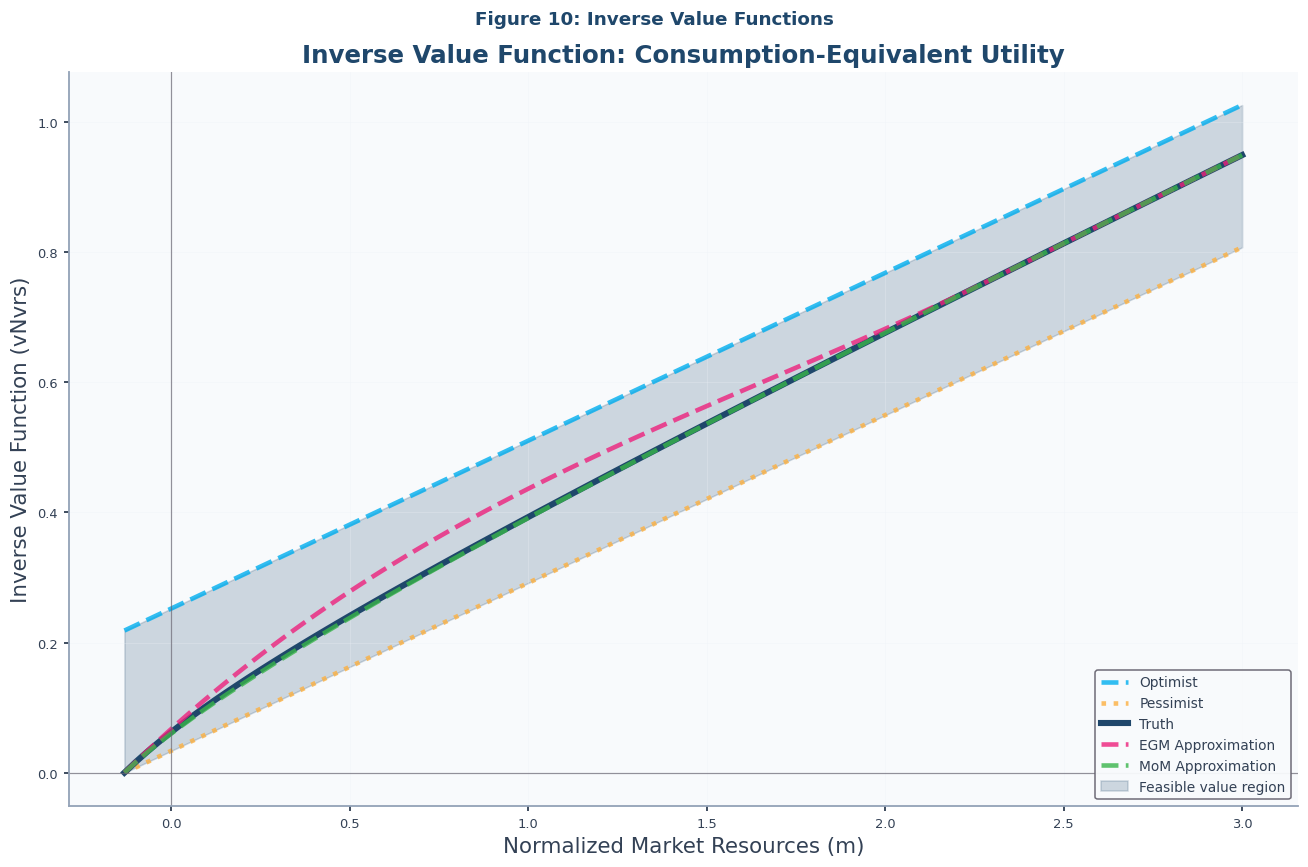
Figure 11: Value Function Moderation Ratio¶
The final figure demonstrates the versatility of the Method of Moderation. Because the method is built on the general principle of moderating between theoretical bounds, it can be applied not just to the consumption function, but to any function that is similarly bounded. Here, we apply it to the inverse value function.
The moderation ratio for the inverse value function is defined analogously to the consumption moderation ratio (following the ML-consistent convention):
This ratio measures how the realist’s inverse value function relates to the theoretical bounds, with at low wealth (pessimistic) and at high wealth (optimistic). As the figure shows, the pattern is similar to that of the consumption moderation ratio, providing further evidence of the robustness of the Method of Moderation, as shown in Notebook-code.
# Figure 11: Value Function Moderation Ratio
plot_moderation_ratio(
solution=IndShockMoMApproxSol,
title=r"Figure 11: Value Function Moderation Ratio $\Omega(m)$",
subtitle="Value Function Moderation Between Bounds",
m_max=10,
grid_type=GridType.VALUE,
)
Further Extensions: Stochastic Rate of Return¶
The analysis so far has assumed a constant, risk-free interest rate. The Method of Moderation can be extended to incorporate a stochastic rate of return on assets. In the case where the rate of return is independently and identically distributed (i.i.d.), the classic work of Samuelson (1969) and Merton (1969)Merton (1971) shows that the consumption function remains linear for a consumer with no labor income, with a constant MPC that depends on the distribution of returns.
This result allows the MoM framework to be applied directly, simply by substituting the stochastic-return MPC for the perfect-foresight MPC in the definition of the optimist’s consumption function. As wealth becomes very large, the consumption function becomes asymptotically linear as the precautionary motive related to labor income vanishes Benhabib et al., 2018. For a detailed derivation, see Carroll (2020). The more complex case of serially correlated returns is a topic for future research.
Summary: Why the Method of Moderation Matters¶
This notebook has demonstrated the Method of Moderation from both a practical and a theoretical perspective. We began by showing that the standard Endogenous Grid Method, while computationally efficient, can produce economically nonsensical results when extrapolating from a sparse grid. We then introduced the theoretical underpinnings of MoM, which is built on the insight that the true consumption function is always bounded by analytical optimist and pessimist solutions.
The core innovation of the Method of Moderation is to solve the model in a transformed space defined by these bounds. By interpolating a moderation ratio via an asymptotically linear logit transformation, MoM ensures that its solutions respect theoretical constraints by construction. This approach not only solves the extrapolation problem but also provides a robust and efficient method for solving consumption-saving models.
Key Advantages:
Theoretical Consistency: Solutions always respect economic bounds, preventing issues like negative precautionary saving.
Numerical Stability: The use of transformations and analytical bounds leads to robust and accurate solutions.
Computational Efficiency: MoM builds upon the speed of EGM, adding only a small computational overhead.
These features make the Method of Moderation a powerful tool for a wide range of applications, from academic research to policy analysis in central banks and other institutions.
For complete theoretical development see The Method of Moderation.
- Friedman, M. (1957). A Theory of the Consumption Function. Princeton University Press.
- Muth, J. F. (1960). Optimal Properties of Exponentially Weighted Forecasts. Journal of the American Statistical Association, 55(290), 299–306.
- Carroll, C. D. (2020). Solving microeconomic dynamic stochastic optimization problems [Techreport]. Johns Hopkins University. https://www.econ2.jhu.edu/people/ccarroll/SolvingMicroDSOPs.pdf
- Leland, H. E. (1968). Saving and Uncertainty: The Precautionary Demand for Saving. Quarterly Journal of Economics, 82(3), 465–473. 10.2307/1879518
- Sandmo, A. (1970). The Effect of Uncertainty on Saving Decisions. Review of Economic Studies, 37(3), 353–360. 10.2307/2296725
- Kimball, M. S. (1990). Precautionary Saving in the Small and in the Large. Econometrica, 58(1), 53–73. 10.3386/w2848
- Carroll, C. D. (1997). Buffer-Stock Saving and the Life Cycle/Permanent Income Hypothesis. Quarterly Journal of Economics, 112(1), 1–55. 10.1162/003355397555109
- Stachurski, J., & Toda, A. A. (2019). An Impossibility Theorem for Wealth in Heterogeneous-Agent Models. Journal of Economic Theory.
- Ma, Q., Stachurski, J., & Toda, A. A. (2020). The Income Fluctuation Problem and the Evolution of Wealth. Journal of Economic Theory, 187, 105003. 10.1016/j.jet.2020.105003
- Carroll, C. D. (2006). The method of endogenous gridpoints for solving dynamic stochastic optimization problems. Economics Letters, 91(3), 312–320.
- Barillas, F., & Fernández-Villaverde, J. (2007). A Generalization of the Endogenous Grid Method. Journal of Economic Dynamics and Control, 31(8), 2698–2712.
- Hintermaier, T., & Koeniger, W. (2010). The Method of Endogenous Gridpoints with Occasionally Binding Constraints among Endogenous Variables. Journal of Economic Dynamics and Control, 34(10), 2074–2088. 10.1016/j.jedc.2010.05.002
- Fella, G. (2014). A Generalized Endogenous Grid Method for Non-smooth and Non-concave Problems. Review of Economic Dynamics, 17(2), 329–344. 10.1016/j.red.2013.07.001
- Iskhakov, F., Jørgensen, T. H., Rust, J., & Schjerning, B. (2017). The Endogenous Grid Method for Discrete–Continuous Dynamic Choice Models with (or without) Taste Shocks. Quantitative Economics, 8(2), 317–365. 10.3982/qe643
- White, M. N. (2015). The Method of Endogenous Gridpoints in Theory and Practice. Journal of Economic Dynamics and Control, 60, 26–41. 10.1016/j.jedc.2015.08.001